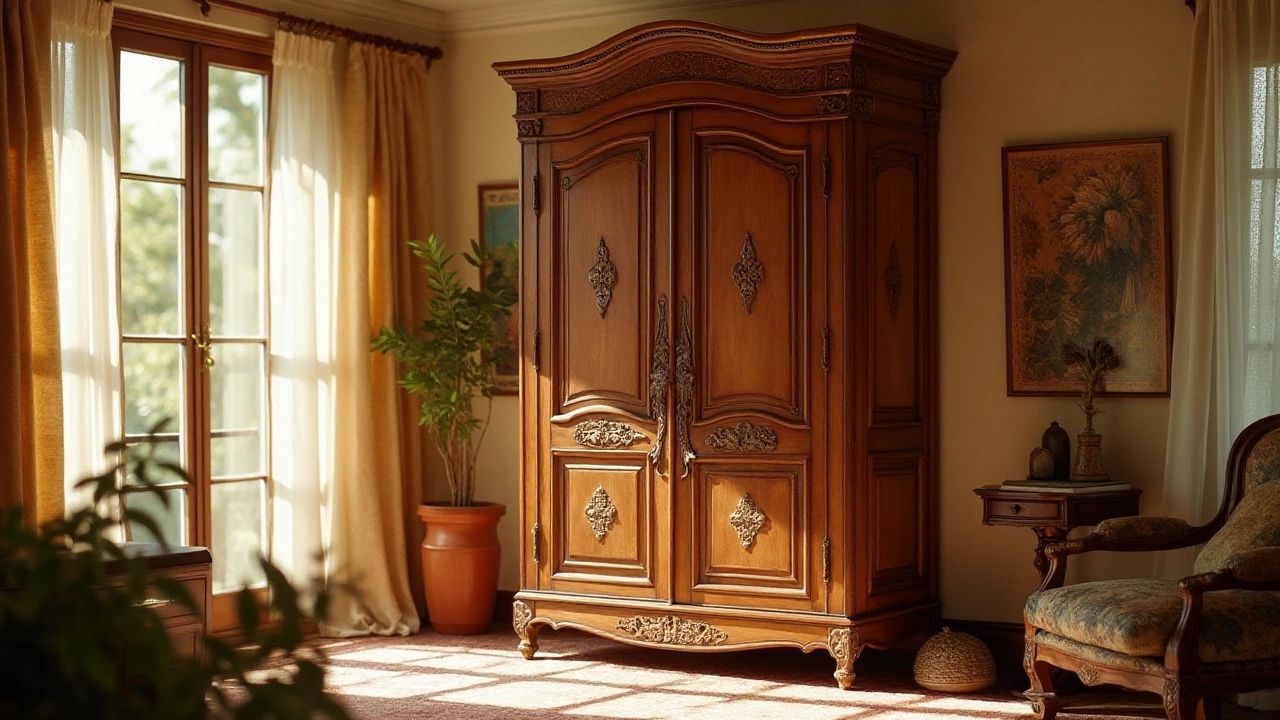Armoire Guides: Design, Storage & Styling Tips
Looking for a piece that holds clothes, keeps clutter away and adds a touch of style? An armoire can do all that without a built‑in closet. It’s a free‑standing wardrobe that works in any room – bedroom, hallway or even a living area. Below you’ll get the basics for picking the right one, styling it to match your décor, and keeping it in good shape.
Picking the Right Armoire for Your Space
Start by measuring the floor space. Walk around the spot where you plan to put the armoire and note the width, depth and height you have. A common mistake is buying something that blocks the door or makes the room feel cramped. As a rule of thumb, leave at least a six‑inch gap in front so the doors open fully.
Next, think about what you’ll store. If you need long hanging space for dresses, look for a tall unit with a high rod. For folded sweaters and shoes, drawers or shelves work best. Many modern armoires come with a mix of hanging bars, shelves, and drawers – that flexibility helps you adapt as your storage needs change.
Material matters too. Solid wood gives a classic, sturdy feel but can be pricey. Engineered wood or MDF with a wood veneer offers a similar look for less money, though it may not last as long under heavy use. If you have kids or pets, a laminate finish resists scratches and spills, making cleanup easier.
Styling and Maintaining Your Armoire
Color and hardware can turn an armoire from bland to a focal point. A matte white or soft gray blends well with modern interiors, while a rich walnut or painted teal adds personality. Choose handles that match other fixtures in the room – brushed nickel for a sleek vibe or brass for a vintage feel.
Arrange the inside wisely. Keep frequently used items at eye level and store seasonal pieces higher up. Use baskets or bins inside the drawers to keep smaller items tidy. Adding a mirror to the door not only makes the piece more functional but also creates the illusion of a larger space.
Maintenance is simple. Dust the exterior weekly with a soft cloth. For wood finishes, wipe with a damp cloth and dry immediately; avoid harsh chemicals that can strip the surface. Check the hinges and slides every few months – a little silicone grease can keep doors opening smoothly.
Finally, think about placement in the room’s flow. An armoire placed against a wall can act as a room divider, giving a small studio a defined sleeping area. In larger rooms, pair it with a bench or a narrow console for a cohesive look.
With the right size, material and styling, an armoire becomes more than just storage – it’s a piece that ties the room together. Use these tips to choose a unit that fits your life and adds the look you want. Happy decorating!
What Are Old Closets Called? A Guide to Naming and Spotting Vintage Wardrobes
Ever wondered what old closets are called or why your grandma's wardrobe looks so different from the ones in stores today? This article digs into the names, designs, and history behind vintage wardrobes, including tips for spotting genuine antiques. You'll learn why words like 'armoire' and 'chifforobe' are more than just fancy labels. We'll also cover how to tell if a piece is truly old, and what makes these closets unique. Get practical advice for buying, restoring, or just appreciating these timeless pieces.
Understanding French Wardrobes: History and Styles
Dive into the elegant world of French wardrobes, known as armoires, exploring their unique charm and historical significance. Uncover the differences between the various French styles and their evolution over the centuries. Learn how to incorporate a touch of French elegance into your own home and discover practical tips for choosing the right wardrobe. This article provides insight into not just the furniture piece but the story it tells about French culture.






